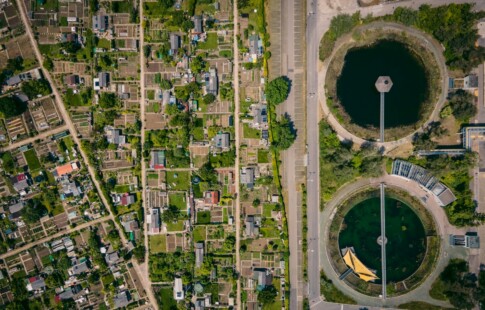
Is There Ethical Consumption Under Regenerative Capitalism?
We are reader-supported. When you buy through links on our site, we may earn affiliate commission.
The adage “There is no ethical consumption under capitalism” has become an environmentalist headache with a glimpse of truth. It is a justification for aspiring eco-conscious citizens to spend superfluous amounts of money on companies that do not deserve patronage. Many have unethical practices.
Adversely, it provides insight into the layered complexities of Venn diagrams tying together consumerism and environmentalism. They are inextricably linked, which is why regenerative capitalism has entered the scene to remedy the ethical capitalism paradox.
What Is Regenerative Capitalism?
Traditional capitalism does not synergize with environmentalism because it exploits consumers to practice hyperconsumerism, destroying the planet. Regenerative capitalism proposes the opposite — behaviors that heal and nourish the economy and world instead of taking advantage of it to meet unrealistic purchasing demands.
The mentality challenges environmentalism too. Regenerative capitalism requires a comprehensive look at the planet beyond product, waste, and raw material extraction. It asserts a global mindset shift beyond going net zero or zero waste, buying an EV, or taking reusable bags to the grocery store. It encompasses every eco-conscious action because regenerative activities are corporate and individual, profitable and expensive, and ethical and controversial.
The new brand of capitalism bleeds into other sectors apart from retail. The ideology bleeds into how urban development unravels, inspiring designers and architects to build cities that support other regenerative practices. Eventually, it leads to a net-positive, more conscious society prioritizing optimism and long-term engagement over instant gratification and convenience.
How Is Modern Capitalism That Wasteful?
Capitalism intends to help those in charge of trade profit. It is not to allow the planet or its people to flourish — those in control of industry will succeed. It is at the potential — and likely — expense of everyone else. Because capitalist drives are money and power, those profiting from its ideas will do anything to increase the bottom lines — even if it leads to labor or environmental exploitation.
Companies expose people to around 347 advertisements on average daily. Social media habits, trends, and publications contribute to mass consumption perpetuating these ideas. Consider how frequently comments in YouTube videos are people asking where the vlogger got their top and if they have an affiliate link instead of contributing to the discourse surrounding the video’s topic.
How Will Regenerative Capitalism Fix the Problem?
Regenerative capitalism places companies uniquely positioned to fix the planet more than they destroy it. Journalist Chris Stokel-Walker adds to this idea by suggesting that industry is baked into nature and isn’t supposed to oppose it. Regenerative capitalism will more likely assist environmental health combined with circular economic practices.
The majority of the world’s emissions come from agriculture and fishing. These industries are the ones that will have the most difficulty implementing regenerative practices. However, these sectors have an advantage.
For example, transportation or concrete has numerous innovations to make that have never met human eyes for regenerative practices, much less decarbonization. Creating an electric car or carbon-sink concrete is excellent for advancing environmental initiatives, but it isn’t regenerative — it’s potentially net-zero at best. Hard-to-abate sectors have a long way to go.
Humans have already created essential practices for regenerative agriculture and aquaculture. Therefore, the hurdles are mostly mindset-related, as the strategies exist — they need to be reincorporated at a much larger scale.
In 2015, the eight principles of regenerative capitalism were established:
- In right relationship
- Views wealth holistically
- Innovative, adaptive, responsive
- Empowered participation
- Honors community and place
- Edge effect abundance
- Robust circulatory flow
- Seeks balance
How Does This Relate to Biomimicry?
Biomimicry is creating a product or process that replicates the behavior of nature and living things. For example, engineers might ask how photosynthesis could inspire a new wave of eco-friendly technology. Humans surround themselves with examples of biomimicry in products they aren’t even aware of. Down feather insulation replicates the way birds warm themselves to prevent southerly migrations.
Everything from how trains blitz down railways to how people construct city halls must have elements of biomimicry to become even closer to regenerative.
If people look to nature for design inspiration and combine it with the principles of regenerative capitalism, the world can undo what adverse impacts of climate change.
Capitalism’s Impact on the Environment in Numbers
It is difficult to conceptualize how a nebulous subject like capitalism can have tangible, numerical data to prove that it harms the planet. However, the numbers exist. They improved data-gathering abilities of modern technology allow corporations and people to better understand how passive action leads to worldwide damage:
- The top 10% of earners that contribute most to capitalist tendencies account for almost 50% of the Earth’s destruction.
- Corporations are responsible for 70% of the world’s carbon emissions in categories like transportation and energy expenditure.
- Everything buyers consume account for up to 80% of land, raw material, and water use worldwide.
- Every purchase on Amazon encourages them to continue outputting some of the most concentrated emissions from a single company. They emit 71.54 million metric tons of carbon annually, with the number increasing as buyers become more hyperconsumerist.
It is difficult to rewire our brains to stop buying less, especially when shopping is considered a hobby and a form of therapy to some. However, in order to change corporate behaviors, personal behaviors and purchasing boycotts must set a precedent.
Creating Balance in a Consumptive World
Buying something and seeing it two days later brings people joy because of expedited shipping. Meanwhile, billionaires pay workers minimum wage in warehouses and pay laborers even less to mine materials in impoverished countries, deepening poverty in underprivileged nations. It is a vicious cycle that the concept of regenerative capitalism attempts to solve.
Without adjusting mindsets and corporate practices, the average consumer will be subject to these behaviors almost without knowing. Speak up about unsustainable capitalist behaviors any time you see them, even in companies you have supported for years. They will only know their customers care once they speak up, so the best time to do so is to support more regenerative ideals worldwide.
Share on
Like what you read? Join other Environment.co readers!
Get the latest updates on our planet by subscribing to the Environment.co newsletter!
About the author
Jane Marsh
Starting from an early age, Jane Marsh loved all animals and became a budding environmentalist. Now, Jane works as the Editor-in-Chief of Environment.co where she covers topics related to climate policy, renewable energy, the food industry, and more.





